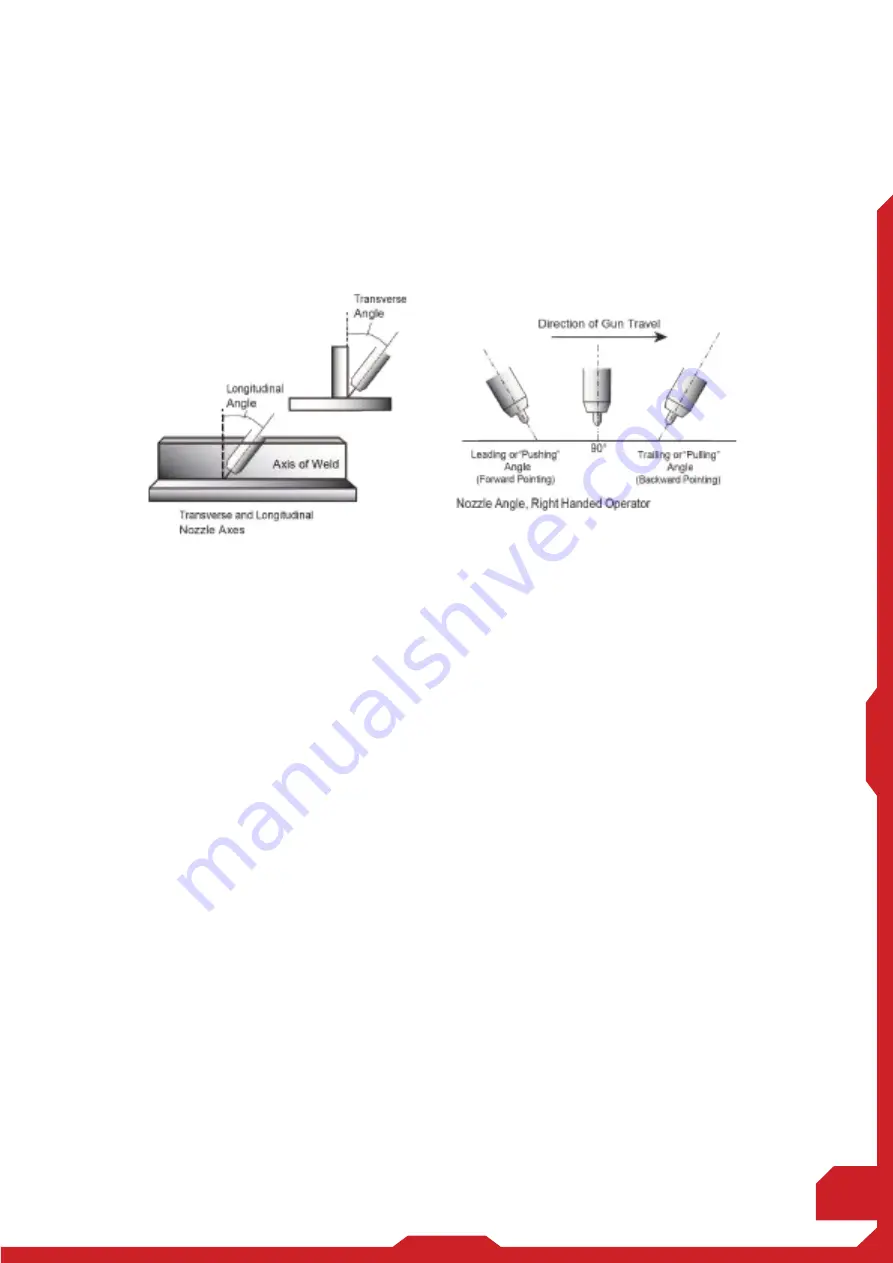
11
Nozzle Angle
This refers to the position of the welding gun in relation to the joint. The transverse angle is usually one half the included angle between
plates forming the joint. The longitudinal angle is the angle between the centre line of the welding gun and a line perpendicular to the axis
of the weld.
The longitudinal angle is generally called the Nozzle Angle and can be either trailing (pulling) or leading (pushing). Whether the operator is
left handed or right handed has to be considered to realize the effects of each angle in relation to the direction of travel.
Establishing the Arc and Making Weld Beads
Before attempting to weld on a finished piece of work, it is recommended that practice welds be made on a sample metal of the same
material as that of the finished piece.
The easiest welding procedure for the beginner to experiment with MIG welding is the flat position. The equipment is capable of flat,
vertical and overhead positions.
For practicing MIG welding, secure some pieces of 1.5mm or 2.0mm mild steel plate 150 x 150mm. Use 0.8mm flux cored gasless wire or a
solid wire with shielding gas.
Setting of the Power
Power source and Wire Feeder settings require some practice by the operator, as the welding plant has two control settings that have to be
balanced. These are the Wirespeed control and the welding Voltage Control.
The welding current is determined by the Wirespeed control, the current will increase with increased Wirespeed, resulting in a shorter arc.
Less wire speed will reduce the current and lengthen the arc. Increasing the welding voltage hardly alters the current level, but lengthens
the arc.
By decreasing the voltage, a shorter arc is obtained with a little change in current level.
When changing to a different electrode wire diameter, different control settings are required.
A thinner electrode wire needs more Wirespeed to achieve the same current level.
A satisfactory weld cannot be obtained if the Wirespeed and Voltage settings are not adjusted to suit the electrode wire diameter and the
dimensions of the work piece. If the Wire speed is too high for the welding voltage,“stubbing”will occur as the wire dips into the molten
pool and does not melt.
Welding in these conditions normally produces a poor weld due to lack of fusion.If, however, the welding voltage is too high, large drops
will form on the end of the wire, causing spatter.
The correct setting of voltage and Wire speed can be seen in the shape of the weld deposit and heard by a smooth regular arc sound.
Содержание 351 SWF
Страница 1: ...TOPGUNWELDING COM AU Manual Guide 351 SWF 505 SWF 3 PHASE MIG WELDER W FEEDER...
Страница 2: ...This page has been intentionally left blank...
Страница 4: ...2...
Страница 18: ...16 Basic Wiring Diagram Power Source...
Страница 26: ...24 Electrical Schematic DIAGRAM...
Страница 30: ...28...
Страница 31: ...29...
Страница 32: ......














































